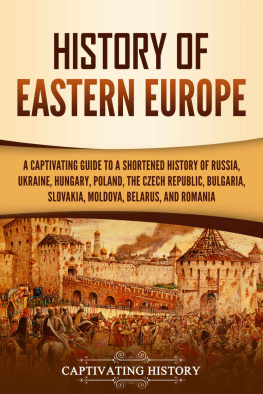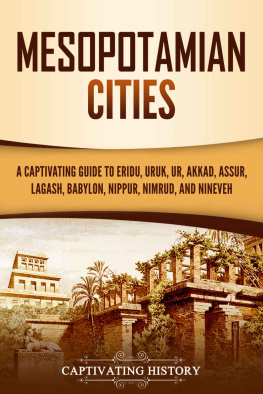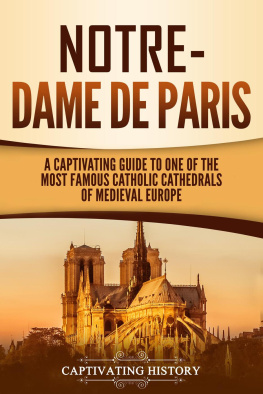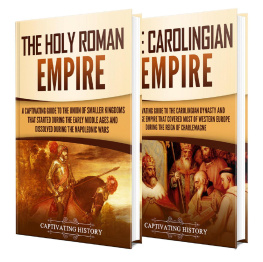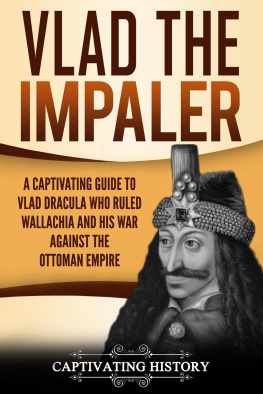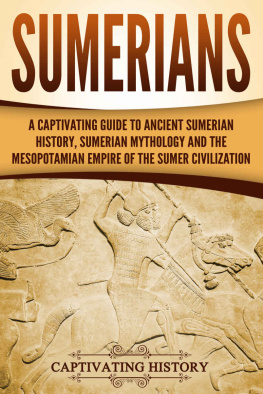Captivating History - Germanic Tribes: A Captivating Guide to the History of the Franks and Lombards
Here you can read online Captivating History - Germanic Tribes: A Captivating Guide to the History of the Franks and Lombards full text of the book (entire story) in english for free. Download pdf and epub, get meaning, cover and reviews about this ebook. year: 2021, genre: Religion. Description of the work, (preface) as well as reviews are available. Best literature library LitArk.com created for fans of good reading and offers a wide selection of genres:
Romance novel
Science fiction
Adventure
Detective
Science
History
Home and family
Prose
Art
Politics
Computer
Non-fiction
Religion
Business
Children
Humor
Choose a favorite category and find really read worthwhile books. Enjoy immersion in the world of imagination, feel the emotions of the characters or learn something new for yourself, make an fascinating discovery.

- Book:Germanic Tribes: A Captivating Guide to the History of the Franks and Lombards
- Author:
- Genre:
- Year:2021
- Rating:4 / 5
- Favourites:Add to favourites
- Your mark:
- 80
- 1
- 2
- 3
- 4
- 5
Germanic Tribes: A Captivating Guide to the History of the Franks and Lombards: summary, description and annotation
We offer to read an annotation, description, summary or preface (depends on what the author of the book "Germanic Tribes: A Captivating Guide to the History of the Franks and Lombards" wrote himself). If you haven't found the necessary information about the book — write in the comments, we will try to find it.
Captivating History: author's other books
Who wrote Germanic Tribes: A Captivating Guide to the History of the Franks and Lombards? Find out the surname, the name of the author of the book and a list of all author's works by series.
Germanic Tribes: A Captivating Guide to the History of the Franks and Lombards — read online for free the complete book (whole text) full work
Below is the text of the book, divided by pages. System saving the place of the last page read, allows you to conveniently read the book "Germanic Tribes: A Captivating Guide to the History of the Franks and Lombards" online for free, without having to search again every time where you left off. Put a bookmark, and you can go to the page where you finished reading at any time.
Font size:
Interval:
Bookmark:
All Rights Reserved. No part of this book may be reproduced in any form without permission in writing from the author. Reviewers may quote brief passages in reviews.
Disclaimer: No part of this publication may be reproduced or transmitted in any form or by any means, mechanical or electronic, including photocopying or recording, or by any information storage and retrieval system, or transmitted by email without permission in writing from the publisher.
While all attempts have been made to verify the information provided in this publication, neither the author nor the publisher assumes any responsibility for errors, omissions or contrary interpretations of the subject matter herein.
This book is for entertainment purposes only. The views expressed are those of the author alone, and should not be taken as expert instruction or commands. The reader is responsible for his or her own actions.
Adherence to all applicable laws and regulations, including international, federal, state and local laws governing professional licensing, business practices, advertising and all other aspects of doing business in the US, Canada, UK or any other jurisdiction is the sole responsibility of the purchaser or reader.
Neither the author nor the publisher assumes any responsibility or liability whatsoever on the behalf of the purchaser or reader of these materials. Any perceived slight of any individual or organization is purely unintentional.
Hi History Lovers!
My name is Matt Clayton, and Im the creator of Captivating History. First off, I want to THANK YOU for reading our books in the Captivating History series. As an avid reader of History myself, I aim to produce books that will hold you captive.
Now you have a chance to join our exclusive history list so you can get the ebook below for free as well as discounts and a potential to get more history books for free! Simply click the link below to join.
P.S. If you join now, you will also receive a free Mythology book. Remember that its 100% free to join the list.

Click here to access your bonus
Also, make sure to follow us on:
Twitter: @Captivhistory
Facebook: Captivating History: @captivatinghistory
Youtube: Captivating History
A Captivating Guide to a Group of Germanic Peoples Who Invaded the Western Roman Empire

The beginnings of the modern state of France can be found in the Roman province of Gauls transformation into a unified kingdom under the people known as the Franks. This transition occurred over centuries and was not uniform throughout the territory comprising modern-day France. While some regions, particularly in the north of France, quickly became Frankish in culture, it took longer for non-Roman cultural characteristics to become widespread in the south, where Roman influence was particularly strong. The story of how France became a political entity, or what we call a state, begins in the Dark Ages.
The Dark Ages were not, in fact, particularly dark in the sense that we know nothing about life in the era. There are sufficient historical sources to provide a detailed picture of how the Roman Empire started on the road to its variety of modern states. In retrospect, we may think that the people living in the Dark Ages had particularly dark lives. This is a modern concept for societies in which life may have been short, harsh, and often brutish. Of course, people living under these conditions were not always aware that there was any alternative. It was not until the rise of the Christian church and the evolution of Christian charity that any form of consideration was given to the lower classes, which helped change their harsh lives. What help the dispossessed, the poor, the sick, and the maimed received from ecclesiastics and church institutions varied from place to place in Europe. With the Christianization of pagans came hope for redemption and, with this, a rise in piety. The reach of the Christian church expanded as more and more demands were put on the many services it offered. Members of the nobility who chose to demonstrate their piety began to retreat from the world and found monasteries and convents. These institutions, which housed communities of the faithful, sometimes dispensed charity to the less fortunate in society. They also were integrated into the social fabric, contributing taxes to the treasuries of dukes, princes, and kings; offering educational services to those who could afford to send their children to a monastic school; and sometimes served as royal advisors and, from time to time, as military leaders.
The name of the Dark Ages, comprising the historical period immediately following the collapse of the Roman Empire, was invented by 14 th -century Renaissance scholars to describe a time of what they considered to be intellectual darkness between the light or brilliance of Roman culture and the period of revival of Roman culture in their day. The Dark Ages was a pejorative term, indicating that the culture in this period was inferior, without merit, and barbaric. This is definitely not true of the era. Although the Roman Empire was on the decline, Christian Europe was on the rise, forming a series of new states or kingdoms, among which was the Frankish kingdom ruled by members of the Merovingian dynasty.
A widespread misconception about the Dark Ages is that it is considered dark because there are few surviving primary historical sources and not enough artistic or material culture to shed light on the lives of the peoples who inhabited Europe at the time. On the contrary, there are many surviving historical documents and archaeological remains to paint a rather comprehensive picture of life in the Dark Ages. This historical period from the late Roman Empire, or late antiquity, to the Early Middle Ages, when European civilization flourished under the banner of emerging Christian feudal states, evolved from the amalgamation of Roman ideas of civilization and the traditions of barbaric, pagan tribes.
The gradual decline in the power of Rome, which began in the 3 rd century CE, meant that the frontiers once separating the so-called barbarian tribes from the civilization of Rome or romanitas (Roman-ness) began to be breached. There were several reasons for this change in the status quo. The Roman Empire suffered from poor leadership, multiple coups, declining economic dominance over the lands around the Mediterranean, and a generalized malaise among the Roman citizens. The peoples who were called barbarians by the Romans, who settled beyond the frontiers of the empire, came under pressure from invaders who swooped out of the Eurasian steppes and southeastern Europe. The Roman armies guarding the frontiers, made up in large part by non-Roman local tribesmen, were weakened by disputes over payment for their service. These disputes were exacerbated by frequent bouts of inflation and the devaluation of Roman currency. The barbarians at the gate began to flood into Roman lands. On the one hand, they sought protection from migrating nomadic tribes from the east, and on the other hand, they wished to avail themselves of the fruits of farming in the organized and peaceful Roman state. This era of the movement of peoples of various ethnicities has been labeled by historians as the Migration Period. It runs roughly from 375 CE or perhaps earlier and ended in the 6 th century.
Font size:
Interval:
Bookmark:
Similar books «Germanic Tribes: A Captivating Guide to the History of the Franks and Lombards»
Look at similar books to Germanic Tribes: A Captivating Guide to the History of the Franks and Lombards. We have selected literature similar in name and meaning in the hope of providing readers with more options to find new, interesting, not yet read works.
Discussion, reviews of the book Germanic Tribes: A Captivating Guide to the History of the Franks and Lombards and just readers' own opinions. Leave your comments, write what you think about the work, its meaning or the main characters. Specify what exactly you liked and what you didn't like, and why you think so.

